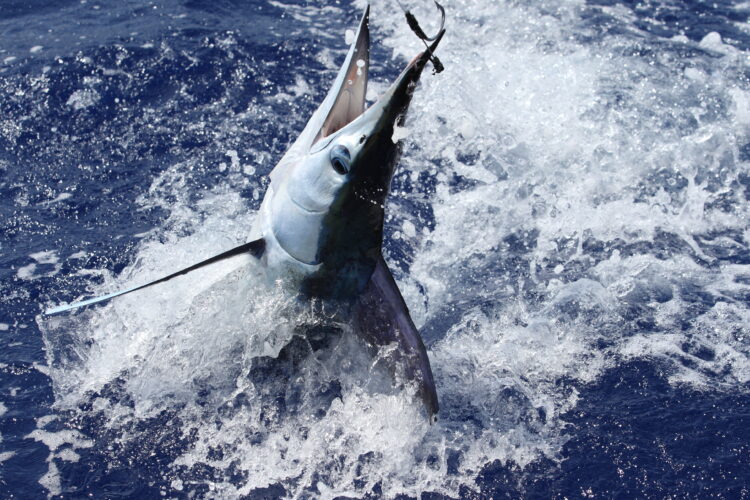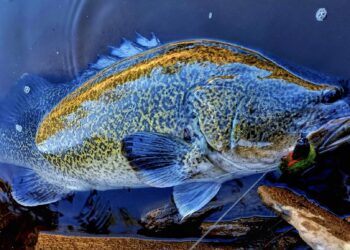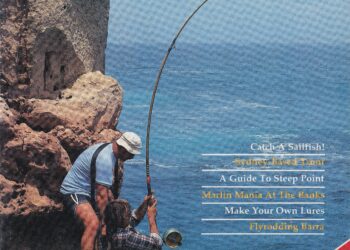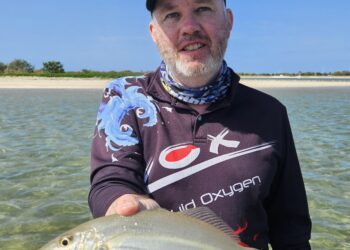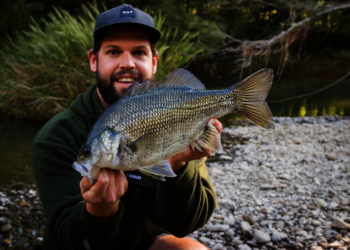SPEARFISH or “Chuckers”, as many anglers and charter-boat captains call them, are the smallest member of our billfish family and certainly the species that are least known about! They only grow to around two metres or so in length and are easily identified from a marlin or a swordfish by their very small and short length bill.
Their beautiful, striking colours blending down from their long black dorsal fin and dark upper body quickly changes to a gleaming silvery white body below. Their distinct white anal fins are noticeable as well, as are the faint blue vertical bars on the body when they are alive in the water. These colourful bars fade fairly quickly though after capture and death.
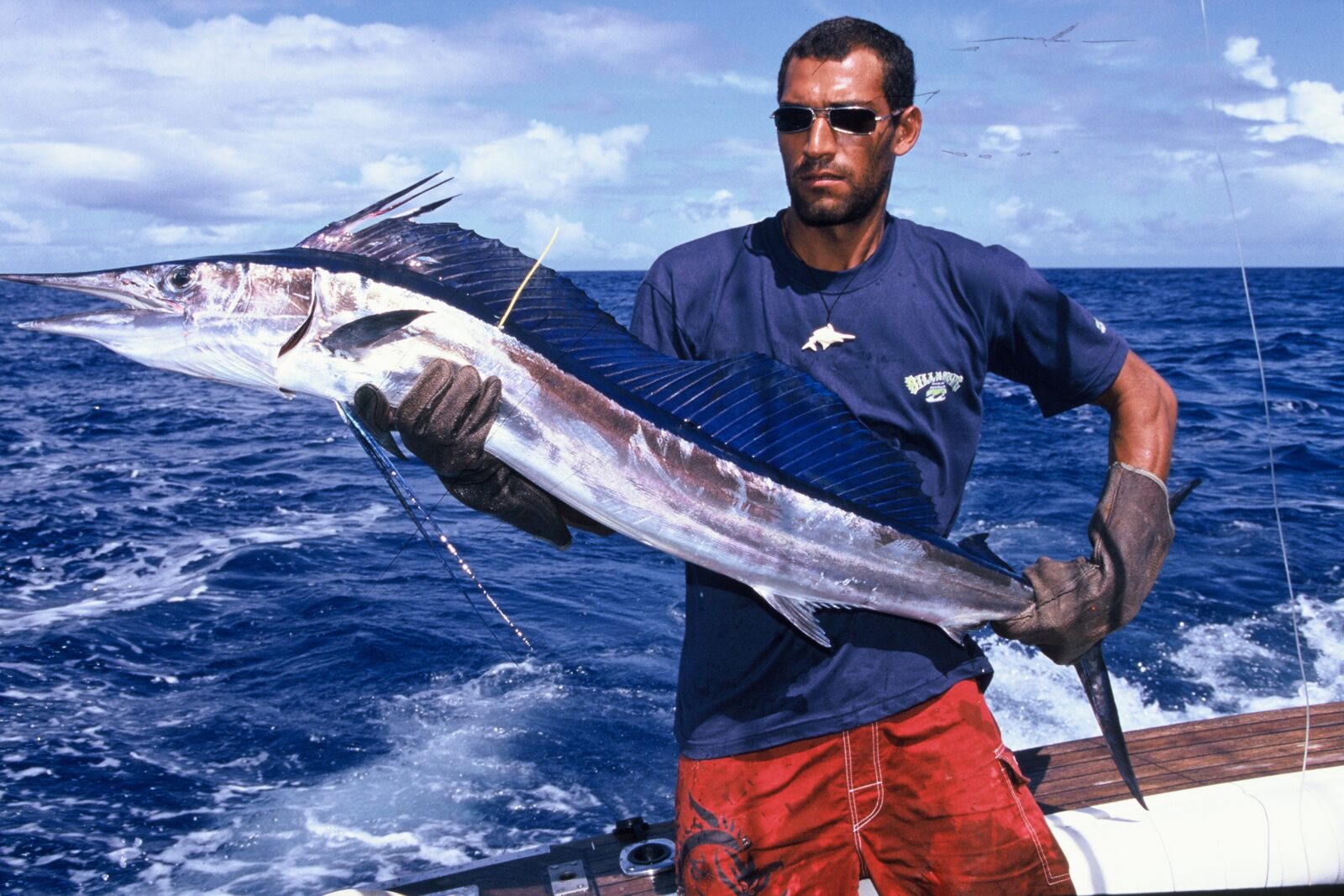
World-wide there are four different spearfish and the Long-Billed species is the largest of them all weighing a little more than the others and growing a bit more in length to just over two metres. The other three are the Round Scale, the Mediterranean and the Short-Billed species and these three are all the smallest only growing to just under two metres in length.
The Long-Billed, Round Scaled and Mediterranean species are only found in the Atlantic and Mediterranean Oceans with frequent captures of the Mediterranean species recorded in the offshore waters around Italy. The Short-Billed species is definitely the far more-widely spread out of all of them and are found in the Pacific, Indian, Mediterranean and Atlantic Oceans.
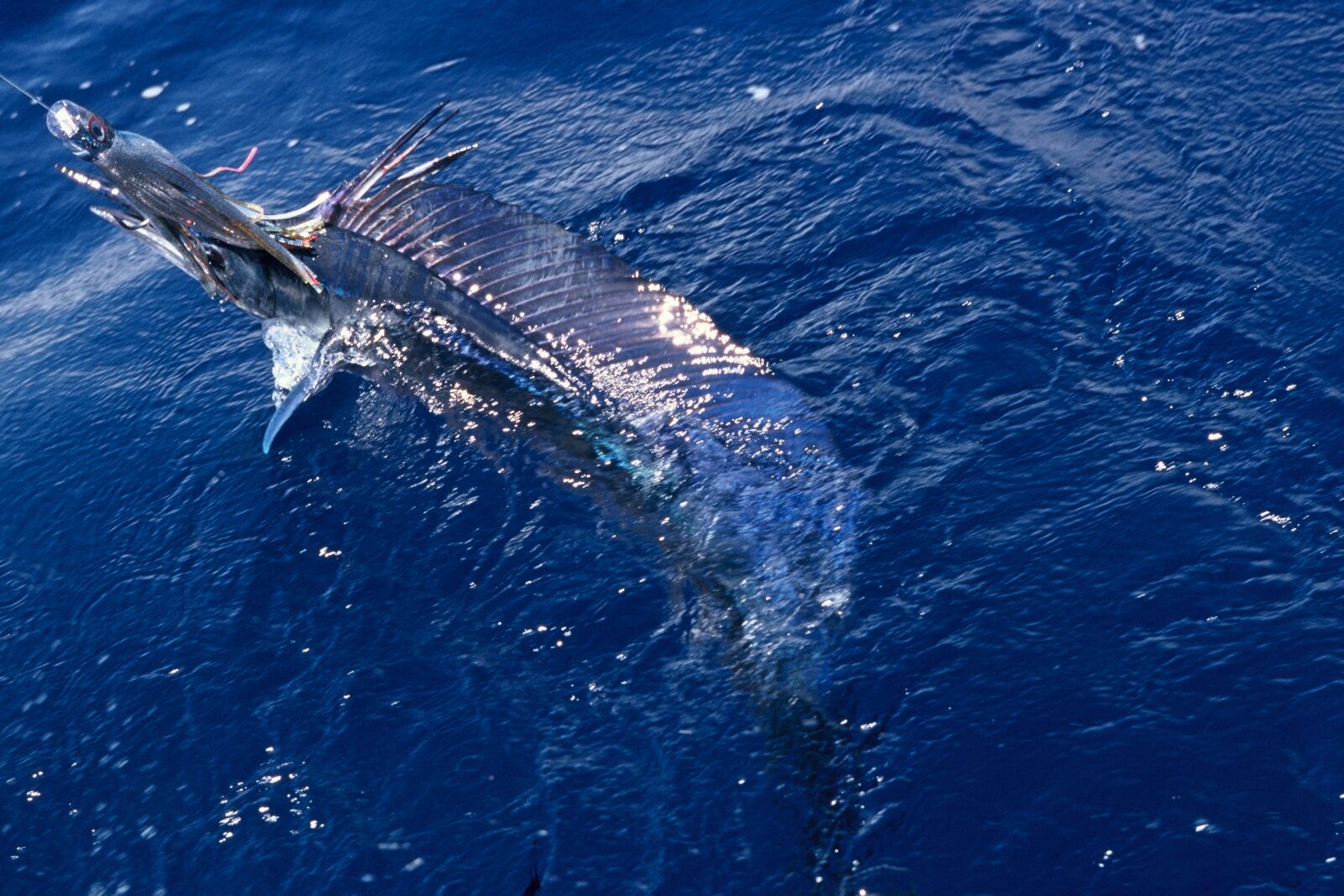
Here in Australian waters the short-billed species is the only Spearfish we have to play with and their captures can only be classified as fairly spasmodic. Its only during the popular summer and early Autumn months when anglers are focussed on catching marlin along the west and east coasts that the odd one is hooked and caught.
The east coast can boast capturing the most every season and the only reason for this is the extra number of boats and sportfishing anglers that are out there fishing for marlin. Places like the Gold Coast, Coffs Harbour, Port Stephens, Sydney and some of the south coast grounds like the Banks off Greenwell Point and Bermagui sees an enormous number of boats out there trolling lures every season.
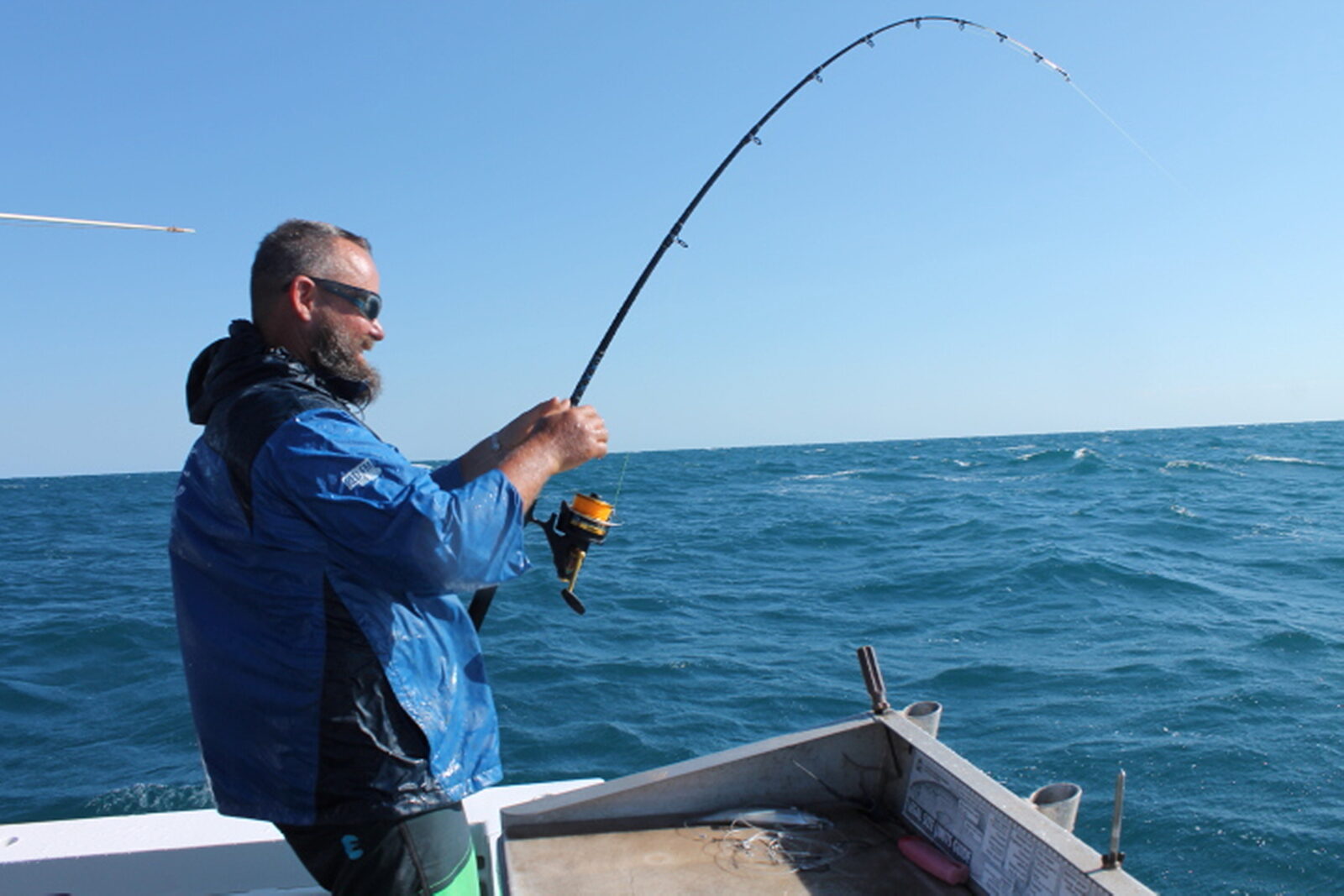
About the only place in the Pacific Ocean where a reasonable number of Spearfish are caught every year is around the Hawaiian Islands and the professional long-line fishermen account for most of them. The many game fishermen trolling over there also catch a fair number and around the Big Island particularly off the Kona coast is definitely the best place to go if ever you wanted to target one.
Trolling lures accounts for nearly all spearfish captures by game fishermen and these aggressive little billfish will attack lures big and small. Some of the photos here about will give you a good idea of the size of some of the large lures they will have a go at.
Anglers wanting to target Spearfish will usually use lighter tackle and smaller lures and take the risk of getting hooked up with a much larger marlin or tuna. Over in Kona where I have witnessed a number of anglers concentrating on Spearfish for either world records or just personal achievements has been interesting. The lures of choice are the slightly smaller six to seven-inch models that run straight in the wake leaving a good strong bubble (smoke) trail.
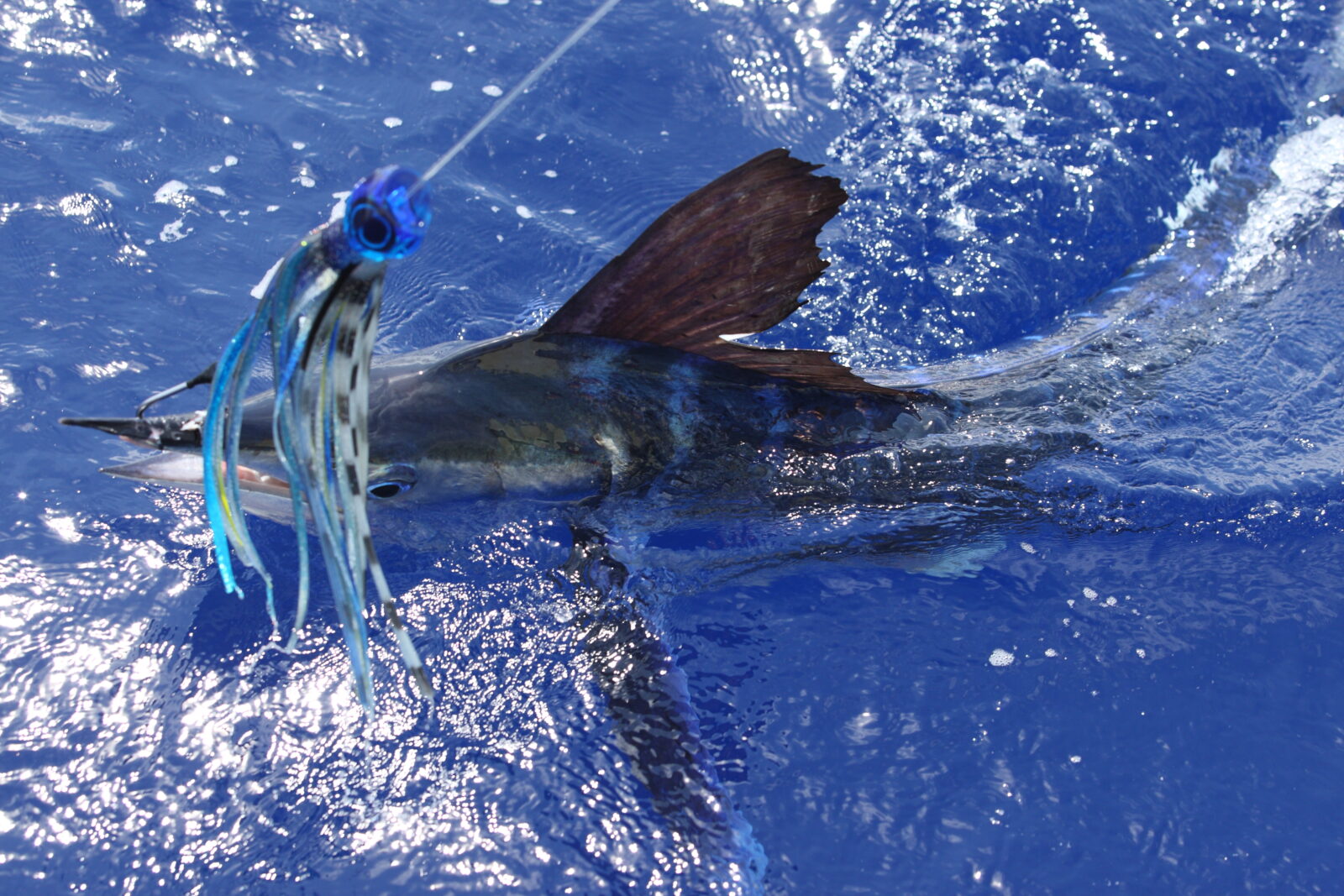
The flat or scooped faced lures achieve this like the models in the Marlin Magic range called the Medium Hard Heads and Ahi Pussies. Another popular lure that works very well is the Aussie made Pakula Sprocket with the Lumo colour favoured the best. All of these lures work very well for this species when they are trolled a little faster than normal also between nine and eleven knots and set well back in the lure pattern on the longer positions off the outriggers.
On the lighter tackle these Spearfish put up a great fight and any camera man onboard the boat should be ready and expect some spectacular jumps and surface action as well. Their beautiful colours make for great photos and if you’re lucky enough to get a nice jump shot it will be treasured greatly in the photo library.
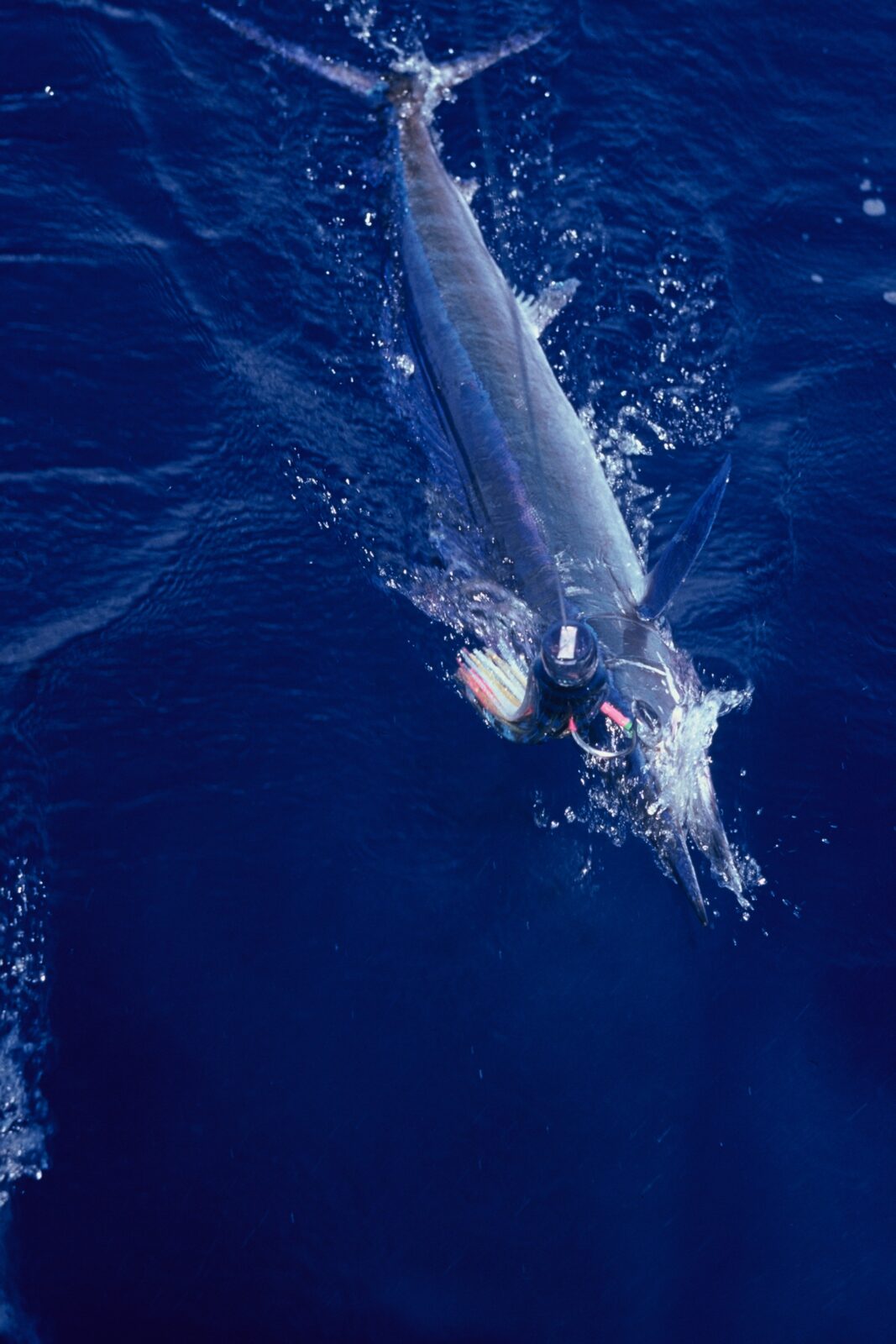
EATING QUALITY
If ever you’re ever planning to target one and you are lucky enough to catch one, you have two options and you can tag and release it or keep it for the table! Tagging one must be done very carefully because of their narrow skinny body and only the smaller plastic dart tags must to be used. Even with these particular tags they need to be inserted in the thicker shoulder section of their body above the pectoral fin and below the dorsal fin.
If you plan to keep one for the table it best to head-spike it correctly so it dies quickly and then bled-out before putting on ice in an ice box or ice bag. These Spearfish have a really nice delicate, pale flesh that needs to be looked after. There are many interesting ways to cook them and the fillets will quickly turn white whether cooked on a hot-BBQ plate or under the grill.
The Hawaiians have some great recipes for these fish and it’s not all that often you see this particular billfish on any of the menus over there, even in some of the top seafood restaurants? It can be easily over-looked also as the Hawaiians call Spearfish, Hebi’s!
Their fillets make excellent thinly sliced sashimi cuts, but my favourite is when its marinated in a mixture of blended fruits, like fresh mango, lime and orange juice and mixed with a little olive oil, salt and black pepper, then cooked quickly on a hot BBQ plate. It’s got a nutty and chicken-like flavour and its definitely far better eating than their larger billfish cousins. Unless you catch one though, you might never get the chance to eat one to find out just how good it is?





